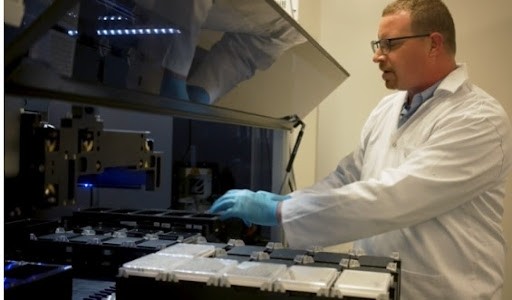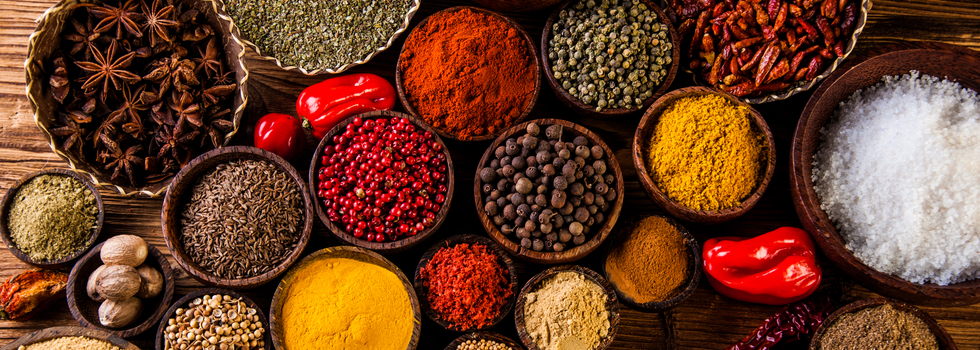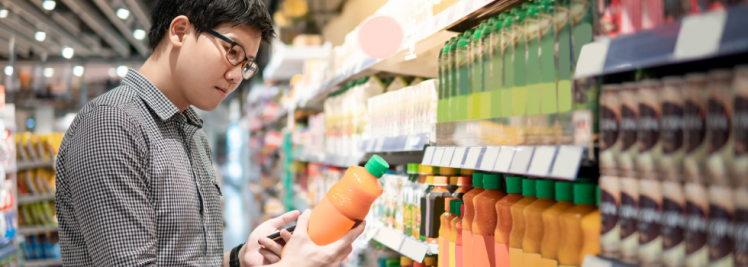Promotional Features
Human tasting panels are so 2020: today, scent perception + AI guide product development
Measuring taste and smell is an imprecise art and can result in numerous NPD failures. But what if there were a way to ensure greater NPD success via the use of AI?
Imagine if you were asked to describe the difference between turquoise and teal? While they may look very similar, they have a very different composition. Luckily the RGB scale brought previously unknown precision measurement to colour and unique identifying numbers can now make these colours exactly reproducible on a computer.
While we can measure light and sound waves, we have imprecise ways of measuring taste and smell – and no standard common language to describe how something tastes or smells. And while smell is our oldest sense, it has been largely taken for granted. This lack of identifiable information on taste and smell is exactly why 80% of product launches fail. Brands rely on subjective information from human tasting panels and long R&D cycles while trying to keep pace with changing consumer preferences.
The trouble with tasting panels
Pre-pandemic, the most common way to determine consumer perception for a new product in development was to assemble a tasting panel and ask the participants what they thought. From there, organisations would try to do the impossible, and the imprecise process of ‘averaging’ the commentary. With the language used to describe things and opinions from consumers all over the map, product development felt like a bit of a game of Marco Polo in a crowded pool.
The issue is that there is no such thing as an ‘average’ consumer. The pandemic brought about two key disruptions to this process: putting groups together physically became impossible during the pandemic, which put tasting panels on hold, and brands (especially those that consumers may have tasted/sampled before purchasing pre-pandemic) looked for ways to describe the attributes of their products online. It was during this period that the demand for objective measurements of flavour became critical.
Aromyx solved this. By developing a biological platform that quantitatively and reproducibly measures taste and smell and removing subjectivity measures, it was able to optimise flavors for the first time.
Optimising flavours for the first time

Aromyx mimics in a lab what is going on in the body by cloning the receptors in the tongue that send signals to the brain, and measuring the response of these receptors in the lab. By seeing how receptors respond to products, it provides the data on how a consumer would respond to them scientifically and not by self-reported descriptions.
This technology allows brands and manufacturers to compare products, aid with new product development and gauge customer perception. Aromyx is working with CPG companies and food manufacturers to do everything from detecting how fruity flavoured ingredients change smells and flavours to reverse-engineering ingredients to taste a certain way. Aromyx can help companies innovating in new areas (like plant-based proteins) or with reformulations (like low-sugar products) ensure they create tastes consumers are accustomed to, increasing the chance of product success and decreasing R&D costs.
The reality is that while consumers might want to eat fewer animal products, or look at low-sugar alternatives to products they like, taste is paramount. If consumers don’t like the way something tastes, they won’t buy it again and if they try a product in a new category (like plant-based meat) and don’t like it, they may not even return to that category of products again. Getting the taste right the first time is critical.
One example of this in action is a brand looking to reformulate a beverage with a sugar substitute. When the substitute was used, the fruit taste of the beverage wasn’t coming through. Testing indicated one receptor had a very different response between the beverage with sugar and the version with the sugar substitute. The sugar substitute didn’t change the taste of the beverage, but it did change the aroma and, therefore, the perception of the flavour. Aromyx was able to help correct this. Through identifying the composite profile of a substance and then substituting ingredients that reproduce or enhance characteristics of that substance, ingredients can be chosen and triaged based on the criteria (health, cost, etc).
Product development for diverse palates
Objective measurements of taste and smell also greatly enhance the ability to explain customer preferences on a geographic, ethnic, and even down to an individual level – something human tasting panels also cannot account for. It also helps organisations produce high-quality, sustainable products and eliminate errors that can cause malodour and off-flavour, which may be more apparent to some consumers than others.
By looking at receptor data, Aromyx can provide product feedback with more specificity and leverage biology to determine how ethnicity, age, culture and geography can impact how people interact with taste and flavour and what their preferences would be. On average, people have 70% of the receptors the same and 30% variation. A lot of the taste differences between consumers can be due to genetic variants of receptors. Good examples of this would be consumers’ wildly different responses to things like beets or cilantro (coriander) – some people love cilantro, while others think it tastes like soap. This is the receptor variation shining through.
A remedy for the paradox of choice
The ability of AI to guide development of new ag and food products that are more attractive to consumers has the potential to drive increased value throughout the supply chain-from pricing decisions to flavour reformulations and discovery to food recommendations, quality control, manufacturing process optimisation, and product design.
Have you ever heard of the paradox of choice? Give someone too many choices and they become stressed out and unsatisfied with any decision they make. Think about how you go ‘noseblind’ after smelling a number of samples of perfumes. If you provide fewer options to consumers, and options that meet their needs, they are actually more likely to buy. Aromyx’s technology can make recommendations for anything that has a smell or taste based on reactions to a sample product, or by analysing and identifying taste and smell preferences revealed by a shopper’s historical purchasing patterns.
While this isn’t the Star Trek replicator creating food we want on-demand, this technology does allow us to use technology to improve the attributes of product offerings, taking us a little closer to that dream.
To find out more about flavour and scent perception, watch the video below:
For more details on how AI can help in optimising flavour your NPD process, contact chanson@aromyx.com or go to www.aromyx.com


